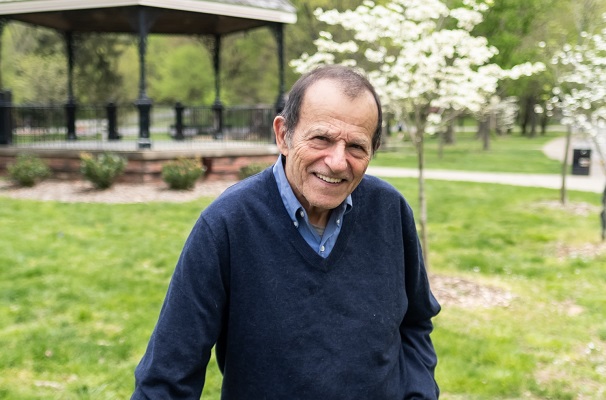For as long ago as ever and ever, people from around the world have poured into New York at Christmastime – an expected 67 million this year who, a year ago, spent $8.9 billion on retail.
Filing out of their hotels each morning, they take to the streets for sightseeing. There’s the tree at Rockefeller Center, a trip to the top of the Empire State Building, a stroll in the park and a Broadway matinee, maybe a cab ride to Hudson Yards to see what has been happening there.
But as much as anything, there are the fabulous holiday windows, a must-see walk-by at Lord & Taylor, Henri Bendel, The Gap, Barneys – oops.
Yes, it was a rough year for some New York staples. In fact, it’s been a rough couple of decades, and not just in New York but all over the place.
Still, the survivors huddle around what’s left of the vanishing certainties. Saks, Bloomingdale’s, Macy’s, Bergdorf Goodman and all of Manhattan’s streetside shopkeepers still play the same waiting game. Creative windows and fabulous holiday interiors in the hopes that enough people will come through the doors, shop around and buy sufficiently to make the fourth quarter – indeed, the year – profitable.
However, it seems that some have decided this strategy is too much “wait” and not enough “game.” Several have aggressively been taking themselves to where the tourists dwell right after they’ve finished their hotel breakfasts.
Advertisement
According to The New York Times (“Stores Catch Holiday Tourists Before They Even Leave the Hotel,” Nov. 27, 2019), some of the city’s retailers have set up shops in hotel lobbies. So, said The Times, “Bloomingdale’s will be selling Baccarat crystal, French chocolates and more at the Loews Regency New York. For the second year, Nordstrom will have a pop-up presence at the JW Marriott Essex House New York on Central Park South, where it will offer men’s and women’s clothes. And for the third time, Macy’s is selling souvenirs, holiday ornaments and other merchandise in the lobby of the Grand Hyatt New York, near Grand Central Terminal.”
Nor is that all. Vendors have gotten into the act, as well. “The Benjamin . . . will have a new pop-up in its lobby that sells slumber-friendly products like sleep-detox kits by Kaia Naturals and pajamas by Dagsmejan.
“And, working with the Well Traveled Trunk, a New York vintage luggage specialist, the Sofitel New York has created a 15-foot-tall Christmas tree for its lobby; it consists of 15 pieces of Louis Vuitton luggage dating from the 1880s to the 1930s that sell from $10,000 to $16,000 each.”
Certainly, the whole shopping-for-the-holidays transaction has been flipped on its head. Many holiday shoppers have already done most of their gift-buying online before they deplane at JFK, La Guardia and Newark. Nobody ever particularly liked schlepping multiple boxes back to Chicago and Dallas in their luggage, and Parisians and Edokko (they’re from Tokyo) also have to worry about customs. So most New York retailers are used to shipping all those purchases and, in tough times, shipping for free. But tough times or not, Amazon has made it de rigueur to ship free to your best customers.
The hope these days is that a Bloomingdale’s shop in the lobby will lead to a visit to the store and will establish an online relationship for the entire year. Look, Saks Fifth Avenue has only 40 stores in the U.S. Bloomie’s has only 38 remaining stores around the country. Nordstrom, which this year opened its first Manhattan presence, has less than 400 – not exactly saturation coverage.
As retail consultant Carol Spieckerman told me recently, “If a shopper goes into Nordstrom while in New York, maybe she gets hooked. And then maybe back home where, there is no Nordstrom, she will go to Nordstrom.com and maintain that relationship.
Advertisement
“This new generation may not be as aware of traditional store brands as previous generations,” Spieckerman says. “They might have previously gone into a Nordstrom store and said, ‘Wow, this is a new look for Nordstrom.’ Today’s younger consumer may go in and say, ‘Wow, who’s this new retail brand?’ ”
A not-new retail brand, 157-year-old FAO Schwarz (now in its fifth or sixth life), is not stopping at the lobby. It’s taking the elevator up – all the way up. The toy retailer is collaborating with hotelier Conrad New York Midtown to create a high-end suite whose rate starts at $3000 per night. Guests can play with and buy merchandise. Of course, there’s a dance-on piano there.
Sweet suite, if only for the very high-rollers. That’s one thing about New York, especially during the holidays. Money, especially, loves it, always has. That’s what retailers are counting on. Some are just not waiting for it anymore.
As a journalist, writer, editor and commentator, Steve Kaufman has been watching the store design industry for 20-plus years. He has seen the business cycle through retailtainment, minimalism, category killers, big boxes, pop-ups, custom stores, global roll-outs, international sourcing, interactive kiosks, the emergence of China, the various definitions of “branding” and Amazon.com. He has reported on the rise of brand concept shops, the demise of brand concept shops and the resurgence of brand concept shops. He has been an eyewitness to the reality that nothing stays the same, except the retailer-shopper relationship.


 Photo Gallery7 days ago
Photo Gallery7 days ago
 Headlines7 days ago
Headlines7 days ago
 Headlines1 week ago
Headlines1 week ago
 Headlines2 weeks ago
Headlines2 weeks ago
 Headlines1 week ago
Headlines1 week ago
 Designer Dozen2 weeks ago
Designer Dozen2 weeks ago
 Designer Dozen5 days ago
Designer Dozen5 days ago
 Headlines7 days ago
Headlines7 days ago















